It happens often you are late from office and then decide to go somewhere to grab a drink,for dinner or for shoppong and on reaching that place you find it closed. Thats really frustrating.But dont worry now google maps latest update brings you solution for that.The new google maps update will tell you time schedule for anystore bar or restaurant.If you searched to locate any place from google maps then it will not only tell you route and estimated time to reach but also flag it up if that place is already closed or will be closed till the time of arrival.
google always trying to find a solution to make life of their users comfortable.Thursday, June 18, 2015
Wednesday, February 18, 2015
How to send a Secret message that will Self-Destruct in the Recipient's Inbox?
Sometimes you need to share private information(account number, password or various bank information) with a family member, friend or Colleague. It is simply possible to send the personal information via email or chat message to the recipient.
However they might forget to delete the message and thereby its risky as the private information may be viraled.Wouldn't it be fantastic if you would have been able to share the message/information via a self destructing message which automatically gets deleted once it has been read?
This is where a very useful website BURN NOTE(www.burnnote.com) comes into action.
It allows someone to send a message to someone else in such a manner that the message will be automatically deleted in predefined time. This ensure that your message truly remains private.
All you need to do simply is start your browser and connect to www.burnnote.com and type the private message . For security the recipient cannot copy the messge and it is also possible to put password on the self destructing message . BurnNote also allows you to set the prdefined time after which the message gets automatically deleted from the receiver's inbox.
2 .CLick on OPTIONS button to access all various options available to you.
3 .Once you are done after typing the private message and selecting various options, Click on Send button.
4. Burn Note will create a link for you. Now you need to paste the link to recipient to share the message. Recipient will be able to read the message only after typing the passsword(if you choose one).
The best part is that the message can be viewed only Once and will get deleted automatically after n number of seconds.
Add from Address Book
How to convert your phone into a Remote Control For your computer?
Everyone of us always wondered to control of our laptops and PCs with mobile.
Being precise let me tell that one can do this by using Unified Remote app.
Unified Remote comes in two parts -the Unified remote server that needs to be installed on computer and UNIFIED REMOTE app that needs to be installed on your Android phone.
Firstly install the Unified Remote server from http://www.unified remote.com on your computer and make sure that Windows firewall is not blocking it.
Once you have installed the server on your computer, you should download and install the UNIFIED REMOTE from the google play store on your android phone.
As soon as you launch the app on your phone, it will ask you to to automatically scan for coresponding server or maually add one. I recommend you to manually add the server.
Now if your computer is connected to Internet through a router, you need to enable POrt Forwarding ion it so that your android app is able to connect to your computer
You can get the detailed instruction on enable port forwarding by visiting
now configure some options as given:
1. IP ADDress
In this field you need enter your computer's private IP. For that Open UNIFIED REMOTE server on your computer> click on Conenctions Tab> Click on Network Interfaces and usually the Ip mentioned in first entry is what you need.
2.PORT RANGE
From 9512 to 9512
3.protocol
TCP and UDP
In case of manual add if you need to know your computer public Ip visit www.whatismyipaddress.com
After completing the required fields tap the save button to continue.
NOw to check whether you have successfully connected to server or not tap the Diagnostics option on the Unified Remote dashboard screen.
To start controlling your computer go into Remotes section . There is a variety of controls availabale. Start using them and have fun........
From 9512 to 9512
3.protocol
TCP and UDP
In case of manual add if you need to know your computer public Ip visit www.whatismyipaddress.com
After completing the required fields tap the save button to continue.
NOw to check whether you have successfully connected to server or not tap the Diagnostics option on the Unified Remote dashboard screen.
To start controlling your computer go into Remotes section . There is a variety of controls availabale. Start using them and have fun........
Tuesday, February 17, 2015
How to unsend an Email from Gmail?
All of us have experienced email regret.
In such a situation wouldn't it be great if it were possible to unsend or undo send an email. This is where the gmail Undo Send feature helps. Once enabled the undo send feature allows you to unsend an email even after it has been sent.
Once you enable the Undo send option, everytime you send an email gmail will not send it instantly.
Instead it will hold back the email on its server for a few seconds allowing you to change your mind, retrieve and modify the email if you wish. To enable undo send feature in gmail all you need to do is:
1. Once you are logged onto your gmail account, click on Settings button.
2. A drop down menu will pop up on the screen again click on settings option.
3. Now click on Labs to browse through all Google Labs feature. Google Labs basically contains experimental feature that may still be under development.
4. Scroll on the Labs page and look for Undo Send option and enable it.
5. Save the changes.
The Feature is enabled now you can make a try...
In such a situation wouldn't it be great if it were possible to unsend or undo send an email. This is where the gmail Undo Send feature helps. Once enabled the undo send feature allows you to unsend an email even after it has been sent.
Once you enable the Undo send option, everytime you send an email gmail will not send it instantly.
Instead it will hold back the email on its server for a few seconds allowing you to change your mind, retrieve and modify the email if you wish. To enable undo send feature in gmail all you need to do is:
1. Once you are logged onto your gmail account, click on Settings button.
2. A drop down menu will pop up on the screen again click on settings option.
3. Now click on Labs to browse through all Google Labs feature. Google Labs basically contains experimental feature that may still be under development.
4. Scroll on the Labs page and look for Undo Send option and enable it.
5. Save the changes.
The Feature is enabled now you can make a try...
Thursday, January 8, 2015
Unblocking Facebook Friend requests - A remedic prevention
We used to send friend requests to various people and in case its not accepted it goes to pending.
If the friend requests remain pending for a long time or for many people, your friend requests get blocked.
The block on your account could last between a few hours and a few days, depending on situation. Unfortunately we can't lift this block for any reason.
But Yes we can surely prevent it from getting blocked. So the following steps need to be performed...
- Go to "Account Settings"
- Select "Download a copy" option
A link will be sent to your email account
- You will have to re-enter your password to confirm
- Download "facebook.zip" by clicking on the link attached with email
- Extract "facebook.zip".
- Open the folder html
- Now open friends.htm
- Scroll down to see "Sent friend requests"
Now your purpose is to check whether the friend request sent is added to pending list or not.
- Press Ctrl+f
- Enter the name of person from sent request list
[If it shows 1 of 1 then your friend request is pending]
So you can search the user and cancel friend request.
You are now safe from being blocked.....
Thursday, January 1, 2015
Lords of Computer science
Who are they?
Ali Aydar
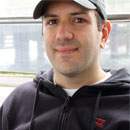
Ali Aydar is a computer scientist and Internet entrepreneur. He is the chief executive officer at Sporcle. He is best known as an early employee and key technical contributor at the original Napster. Aydar bought Fanning his first book on programming in C++, the language he would use two years later to build the Napster file-sharing software.
Anita Borg
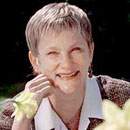
Anita Borg (January 17, 1949 – April 6, 2003) was an American computer scientist. She founded the Institute for Women and Technology (now the Anita Borg Institute for Women and Technology). While at Digital Equipment, she developed and patented a method for generating complete address traces for analyzing and designing high-speed memory systems.
Alfred Aho
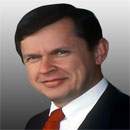
Alfred Aho (born August 9, 1941) is a Canadian computer scientist best known for his work on programming languages, compilers, and related algorithms, and his textbooks on the art and science of computer programming. Aho received a B.A.Sc. in Engineering Physics from the University of Toronto.
Bjarne Stroustrup
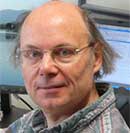
Bjarne Stroustrup (born 30 December 1950) is a Danish computer scientist, most notable for the creation and development of the widely used C++ programming language. He is a Distinguished Research Professor and holds the College of Engineering Chair in Computer Science.
Bill Gates

Bill Gates (born October 28, 1955) is an American business magnate, philanthropist, investor, computer programmer, and inventor. Gates is the former chief executive and chairman of Microsoft, the world’s largest personal-computer software company, which he co-founded with Paul Allen.
Bruce Arden
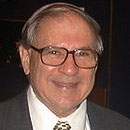
Bruce Arden (born in 1927 in Minneapolis, Minnesota) is an American computer scientist. He graduated from Purdue University with a BS(EE) in 1949 and started his computing career in 1950 with the wiring and programming of IBM's hybrid (mechanical and electronic) Card Programmed Computer/Calculator at the Allison Division of General Motors.
Brendan Eich

Brendan Eich (born 1960 or 1961)is an American technologist and creator of the JavaScript scripting language. He cofounded the Mozilla project, the Mozilla Foundation and the Mozilla Corporation, and served as the Mozilla Corporation's chief technical officer and briefly its chief executive officer.
Barry Boehm
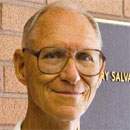
Barry Boehm (born 1935) is an American software engineer, Distinguished Professor of Computer Science, Industrial and Systems Engineering, the TRW Professor of Software Engineering. He is known for his many contributions to the area of software engineering.
Bert Bos
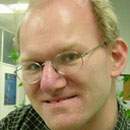
Bert Bos (born 10 November 1963, The Hague, Netherlands) is a computer scientist. He studied mathematics at the University of Groningen, and wrote his PhD thesis on Rapid user interface development with the script language Gist. In 1996, he joined the World Wide Web Consortium (W3C) to work on Cascading Style Sheets (CSS).
Bryan Cantrill
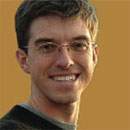
Bryan Cantrill (born 1973) is an American Software Engineer who worked at Sun Microsystems and later at Oracle Corporation following its acquisition of Sun. Cantrill was included in the TR35 list for his development of DTrace, a function of the OS Solaris 10 that provides a non-invasive means for real-time tracing and diagnosis of software. He is currently Chief Technology Officer at Joyent.
Charles Babbage

Charles Babbage FRS (26 December 1791 – 18 October 1871) was an English polymath. He was a mathematician, philosopher, inventor and mechanical engineer, who is best remembered now for originating the concept of a programmable computer.
Dennis Ritchie
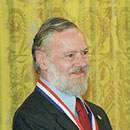
Dennis Ritchie(September 9, 1941 – c. October 12, 2011) was an American computer scientist. He created the C programming language and, with long-time colleague Ken Thompson, the Unix operating system. Ritchie and Thompson received the Turing Award from the ACM in 1983.
David J. Brown
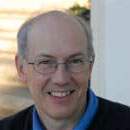
David J. Brown is an American computer scientist. He was one of a small group that helped to develop the system at Stanford that later resulted in Sun Microsystems, and later was a founder Silicon Graphics in 1982. He define the application binary interface for Solaris, Sun's principal system software product.
Edgar F. Codd
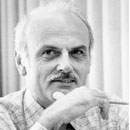
Edgar F. Codd (August 19, 1923 – April 18, 2003) was an English computer scientist who, while working for IBM, invented the relational model for database management, the theoretical basis for relational databases. He made other valuable contributions to computer science.
Frances Allen
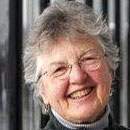
Frances Allen (born August 4, 1932) is an American computer scientist and pioneer in the field of optimizing compilers. Her achievements include seminal work in compilers, code optimization, and parallelization. She also had a role in intelligence work on programming languages.
Gordon Bell
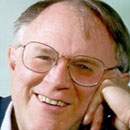
Gordon Bell (born August 19, 1934) is an American electrical engineer and manager. An early employee of Digital Equipment Corporation (DEC) 1960–1966, Bell designed several of their PDP machines and later became Vice President of Engineering 1972-1983, overseeing the development of the VAX.
Gregory Chaitin
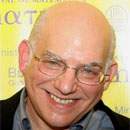
Gregory Chaitin (born 15th. November, 1947 in Argentina) is an Argentine-American mathematician and computer scientist. Beginning in the late 1960s, Chaitin made contributions to algorithmic information theory and metamathematics, in particular an computer-theoretic result equivalent to Godel's incompleteness theorem.
James Gosling
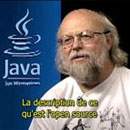
James Gosling OC (born May 19, 1955) is a Canadian computer scientist, best known as the father of the Java programming language. In 1977, Gosling received a Bachelor of Science in Computer Science from the University of Calgary.
John Backus
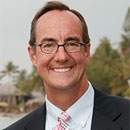
John Backus (December 3, 1924 – March 17, 2007) was an American computer scientist. He directed the team that invented the first widely used high-level programming language (FORTRAN) and was the inventor of the Backus-Naur form (BNF), a widely used notation to define formal language syntax.
Jon Crowcroft
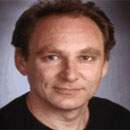
John Crowcroft (born 23 November 1957) is the Marconi Professor of Communications Systems in the Computer Laboratory of the University of Cambridge. Professor Jon Crowcroft is distinguished for his many seminal contributions to the development of the Internet. His work on satellite link interconnection techniques in the 1980s paved the way for rural broadband.
Larry Page
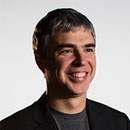
Larry Page (born March 26, 1973) is an American business magnate and computer scientist who is the co-founder of Google, alongside Sergey Brin. On April 4, 2011, Page succeeded Eric Schmidt as the chief executive officer of Google. As of 2014, Page's personal wealth is estimated to be US$32. 3 billion, ranking him #19 on the Forbes list of billionaires.
Larry Wall
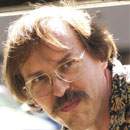
Larry Wall (born September 27, 1954) is a computer programmer and author, most widely known as the creator of the Perl programming language and Camelia, the spunky spokesbug for Perl 6. Wall grew up in south Los Angeles and then Bremerton, Washington, before starting higher education at Seattle Pacific University in 1976.
Luis Von Ahn
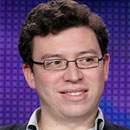
Luis Von Ahn (born 1979) is a Guatemalan entrepreneur and an associate professor in the Computer Science Department at Carnegie Mellon University. He is known as one of the pioneers of crowdsourcing. He is the founder of the company reCAPTCHA, which was sold to Google in 2009, and the co-founder and CEO of Duolingo, a popular language-learning platform.
Luca Cardelli
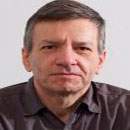
Luca Cardelli FRS is an Italian computer scientist who is an Assistant Director at Microsoft Research in Cambridge, UK. Cardelli is well known for his research in type theory and operational semantics. Among other contributions, he helped design Modula-3, implemented the first compiler for the (non-pure) functional programming language ML.
Michael Dell
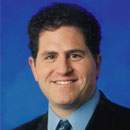
Michael Dell (born February 23, 1965) is an American business magnate, investor, philanthropist, and author. He is known as the founder and CEO of Dell Inc., one of the world’s leading sellers of personal computers (PCs).
Michael Dertouzos
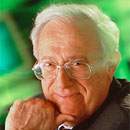
Michael Dertouzos (November 5, 1936 - August 27, 2001) was a Professor at the Massachusetts Institute of Technology and Director of the M.I.T. Laboratory for Computer Science (LCS) from 1974 to 2001. During Dertouzos's term, LCS innovated in a variety of areas, including RSA encryption, the spreadsheet, the NuBus, the X Window System, and the Internet.
Maurice Vincent Wilkes
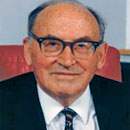
Maurice Vincent Wilkes (26 June 1913 – 29 November 2010) was a British computer scientist credited with several important developments in computing. At the time of his death, Wilkes was an Emeritus Professor of the University of Cambridge. He received a number of distinctions.
Nello Cristianini
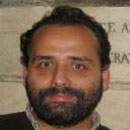
Nello Cristianini (born 1968) is a Professor of Artificial Intelligence at the University of Bristol, a recipient of the Royal Society Wolfson Research Merit Award. His research contributions across different areas, such as machine learning, artificial intelligence and bioinformatics. Specifically, his work is concentrated in the statistical analysis of the learning algorithms.
Philip Don Estridge
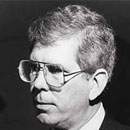
Philip Don Estridge (June 23, 1937 - August 2, 1985), known as Don Estridge, led development of the original IBM Personal Computer (PC), and thus is known as "father of the IBM PC". His decisions dramatically changed the computer industry, resulting in a vast increase in the number of personal computers sold and bought.
Philip Matthaus Hahn
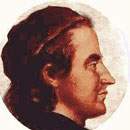
Philipp November 25, 1739 in Scharnhausen, today part of Ostfildern - May 2, 1790 in Echterdingen, today part of Leinfelden-Echterdingen) was a German priest and inventor. In about 1763 he devised a precision sundial, or heliochronometer that incorporated the correction for the equation of time.
Per Brinch Hansen
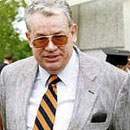
Per Brinch Hansen (November 13, 1938 – July 31, 2007) was a Danish-American computer scientist known for concurrent programming theory. In 1970, his research in computer science focused on concurrent programming, Inspired by Ole-Johan Dahl and Kristen Nygaard's programming language Simula 67, he invented the monitor concept in 1972.
Rasmus Lerdorf

Rasmus Lerdorf (born 22 November 1968) is a Greenlandic programmer with Canadian citizenship. He created the PHP scripting language, authoring the first two versions of the language and participating in the development of later versions led by a group of developers including Jim Winstead.
Robert S. Boyer
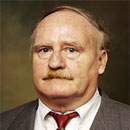
Robert S.Boyer is a retired professor of computer science, mathematics, and philosophy at The University of Texas at Austin. He and J Strother Moore invented the Boyer–Moore string search algorithm, a particularly efficient string searching algorithm, in 1977. He and Moore also collaborated on the Boyer–Moore automated theorem prover, Nqthm, in 1992.
Sabeer Bhatia
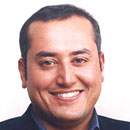
Sabeer Bhatia was born in Chandigarh on 30 December 1968. He grew up in Bangalore and had his early education at the Bishop's School in Pune and then at St Joseph's Boys High School in Bangalore. Sabeer Bhatia is an Indian American entrepreneur who founded the Hotmail email service and Jaxt.
Sergey brin
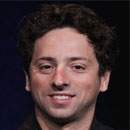
Sergey Brin (born August 21, 1973) is an American computer scientist and internet entrepreneur who, with Larry Page, co-founded Google, one of the most profitable Internet companies. As of June 2014, his personal wealth was estimated to be US$ 30 billion. Together, Brin and Page own about 16 percent of the company.
Serge Abiteboul
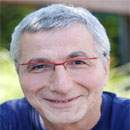
Serge Abiteboul is a computer scientist working in the areas of data management, database theory, and finite model theory. He is currently a senior researcher at the Institute national de recherche en informatique et en automatique (INRIA), the French national research institute focussing on computer science and related areas, and has been a professor of the College de France.
Tim Berners Lee
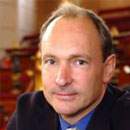
Tim Berners Lee (born 8 June 1955), also known as "TimBL", is a British computer scientist, best known as the inventor of the World Wide Web. Berners Lee is the director of the World Wide Web Consortium (W3C), which oversees the Web's continued development.
Vint Cerf
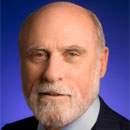
Vint Cerf ( born June 23, 1943) is an American internet pioneer, who is recognized as one of "the fathers of the Internet", sharing this title with American engineer Bob Kahn. His contributions have been acknowledged and lauded, repeatedly. He was instrumental in the development of the first commercial email system (MCI Mail) connected to the Internet.
Subscribe to:
Posts (Atom)

